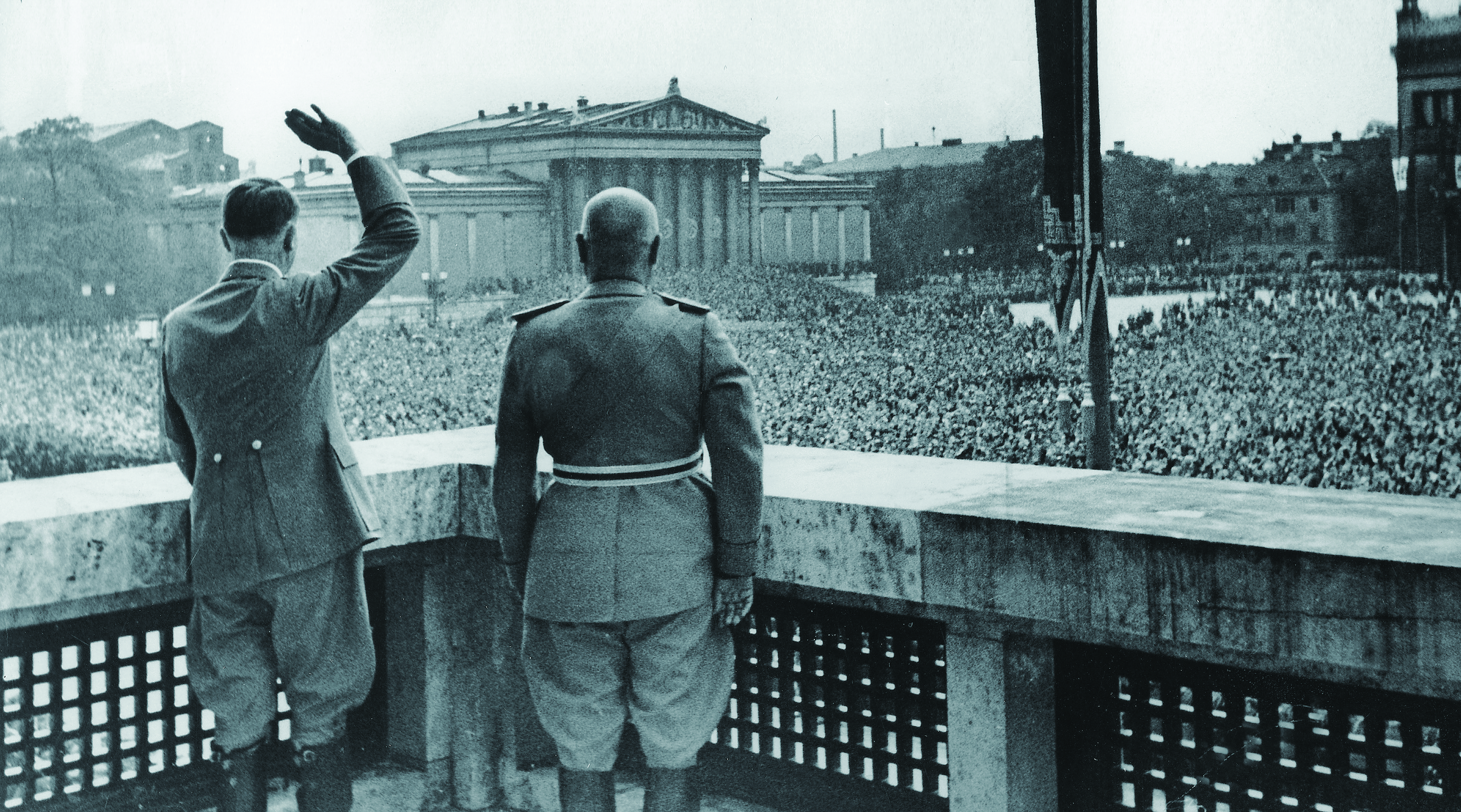[dropcap]W[/dropcap]e speak so often of World War II as “Hitler’s war” that we sometimes forget he wasn’t alone. At his side was the Italian Duce, Benito Mussolini. They forged as much of a friendship as two emotionally stunted men could manage; they worked together to drag Europe into war; and they stayed loyal to one another, after a fashion, until the very end. Today we regard one of them as the greatest monster in human history—and that fact has tended to distort or crowd out our image of the other. In fact, we sometimes forget about Mussolini altogether.
That’s why Mussolini and Hitler is such a welcome addition to the World War II library. Christian Goeschel restores the Duce to the wartime narrative, pointing out how essential the German-Italian alliance was to the coming of World War II, and how critical the personal relationship of the two men was in forging the Axis alliance.
Goeschel is at his best discussing their mutual visits, expressed in ever more grandiose, and sometimes even ridiculous, propaganda displays. They were beauty pageants, in a sense: Fascist spectacles meant to awe the locals and the world. Consider Hitler’s May 1938 visit to Rome, with its endless ranks of marching men and modern weaponry, tens of thousands of flags emblazoned with swastikas and fasces, and hordes of cheering spectators. These visits almost never featured substantive discussions between the two dictators, but rather were showcases for “powerful images of friendship and unity.” Fascist historians actually likened Hitler’s coming to Rome to Charles V’s April 1536 entry into the city after his victory in the conquest of Tunis. It’s easy to sneer at all of this as empty posturing, but Goeschel notes that such displays of power are a coin of the realm of diplomacy and foreign affairs.
The reality behind the unified pageantry was quite different. Even before the war, the Germans had nothing but contempt for the fighting qualities of their Italian allies, and many Italians saw their new friends from the north as thinly disguised barbarians. Indeed, we might say that the two groups least likely to be fooled by Hitler and Mussolini’s posturing were ordinary Germans and Italians.
Goeschel concludes with an eye to historical memory. After the war, both sides blamed the other for defeat: German generals railing on in their memoirs about Italian military incompetence, the Italians turning themselves into passive bystanders and helpless victims of German violence who, by some cruel twist of fate, had wound up on the wrong side in World War II. Such revisionism was a soothing form of historical amnesia that allowed them to forget the years of enthusiastic support for Mussolini’s violent regime. Perhaps this very fine book will help them to remember. ✯
This story was originally published in the April 2018 issue of World War II magazine. Subscribe here.





